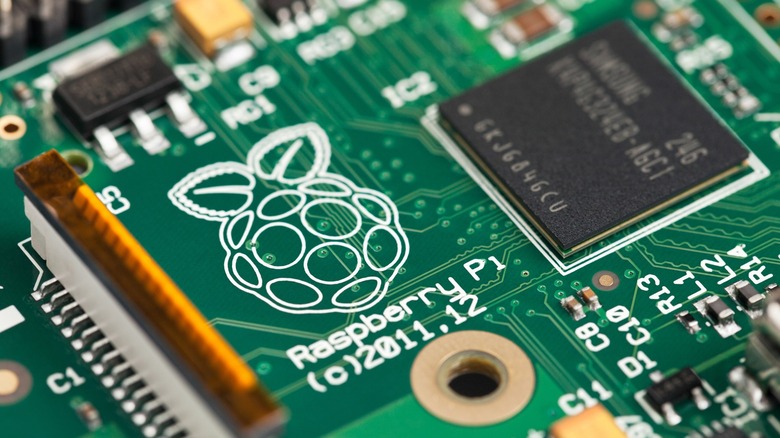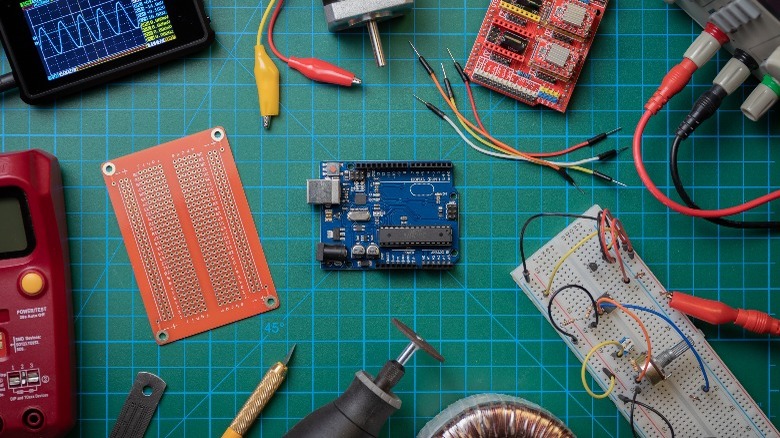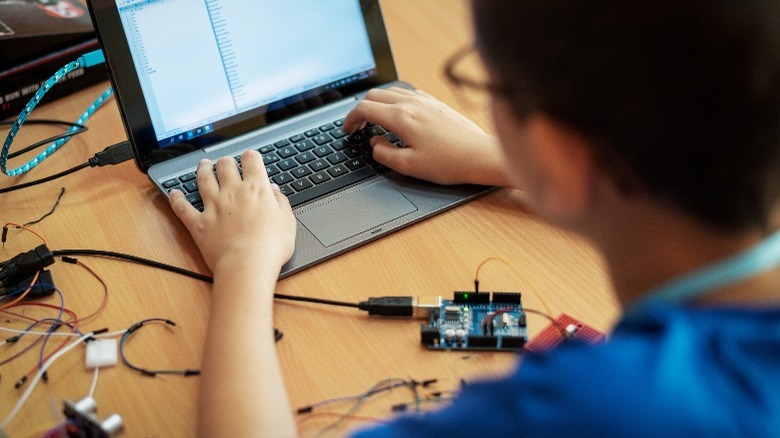3 Things Raspberry Pi Can Do That Arduino Can't
Catering to both creators and educators, both the Arduino and the Raspberry Pi are exceptional platforms to build DIY projects. These could range from simple hobby-based creations like an automatic door locking system or an animated display to more sophisticated and industry-level applications such as programmable robotic arms or wearable health monitors. There are plenty of fun and easy Arduino projects for beginners, the same way the list of unexpected uses for the Raspberry Pi is huge.
Understanding the differences between the Arduino and the Raspberry Pi is crucial, since both the systems excel in their own ways and applications. While the Arduino is a default choice by many for handling simple sensor-based designs, the Raspberry Pi is often chosen for its broader range of functionalities to future-proof scalable projects. But what exactly can a Raspberry Pi do that the Arduino can't? Before you start gathering tools for your next creative assignment, it's best to assess which framework better fits your requirements.
Raspberries to oranges
Although the seemingly endless repository of cool project ideas on the internet may suggest that the Raspberry Pi and the Arduino are interchangeable systems, they actually serve distinctly different roles on a fundamental level. The Arduino is a microcontroller that's best suited to handling single operations. Microcontrollers have lower processing speeds, but tend to consume less power — making the Arduino a more efficient option.
The Raspberry Pi, on the other hand, is a microcomputer capable of handling multiple processes at the same time. This means the Raspberry Pi actually runs a fully-fledged operating system and thus is able to perform most of the computing tasks you could expect your computer to do — just on a smaller scale. Compared to the Arduino, the Raspberry Pi has significantly more RAM and a faster processor. It also offers more connectivity options, opening the doors to a slew of other applications that the Arduino just can't undertake out of the box.
Create complex programs
As stated before, the Raspberry Pi can run a full operating system, which is Linux in most cases — but it can handle different flavors of the OS, and even trimmed-down versions of Windows. Furthermore, the Raspberry Pi supports several high-level programming languages like Java, Ruby, Scratch, and Python — compared to just C/C++ on the Arduino. Pairing this with the Pi's 64-bit quad-core processor, one can write complex code to achieve multi-functional programs.
For example, you can use a Raspberry Pi to add and streamline connectivity between your household's various smart devices like lights, heaters, and security cameras. A single program can utilize both sensor inputs, such as motion or temperature detection, and output automated commands to provide a cohesive smart home environment. Or perhaps you can leverage its versatility to create useful projects for your backyard using the Raspberry Pi – for example, HeaterMeter is a smart Raspberry Pi-based barbecue controller that assists in slow cooking by adjusting the speed of the blower fan.
Internet connectivity with the Raspberry Pi
Another key differentiating factor between the two platforms is connectivity. Not only does the Raspberry Pi sport more I/O pins than the Arduino, but it has a good range of communication ports, too. You can effortlessly add internet connectivity to your Raspberry Pi using the Ethernet port. This unlocks numerous possibilities when it comes to building projects with the microcomputer.
With just a few resources and time on your hands, you can set up a web server on a Raspberry Pi. This can then be used for a plethora of purposes, such as a dedicated VPN or ad blocking service, a wireless file management system, or a cost-free way to host websites. By installing the Apache web server and routing your mini computer to the internet, you can transform your Raspberry Pi into a personal server that can then perform a variety of tasks.
Tired of trying to remember all your passwords, but don't want to lay your trust in a third-party service? You can host your own password manager using the right configuration on your Raspberry Pi. Certain models of the Raspberry Pi can connect to the internet using Wi-Fi as well.
Create your own media player
Another connectivity advantage the Raspberry Pi has over the Arduino is the HDMI port — allowing it to directly output both video and audio to a larger screen. With just a flash drive or a microSD card, you can convert your Raspberry Pi into a media center. Open Source Media Center, or OSMC for short, is one of the most popular distributions that utilizes the Kodi media player to handle playback.
Once you've installed your operating system of choice, you can connect an external hard drive directly to your Raspberry Pi via the USB port and start watching content. In case you're looking for something simpler, you can install Mopidy to stream music from a local drive, or through popular services like Spotify and SoundCloud.
Alternatively, you can set up a Plex library to stream your favorite music, movies, and TV shows. Instead of keeping a relatively high-powered laptop or desktop computer running all the time as a server, you can offload the task to the much smaller and efficient Pi microcomputer.




